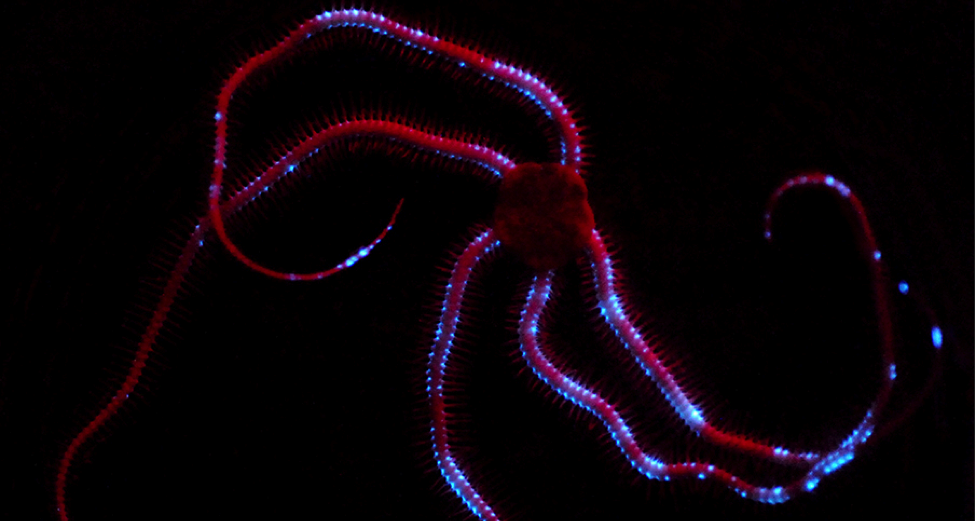Interesting Facts!
The brittle star was the first deep-sea animal recorded. It was found by accident by Sir John Ross in 1818 while he was searching for the North West passage. The first ophiuroid fossil was estimated to be from 1804 in Germany (Hunter 2011).
There is not much use of ophiuroids for humans but some are sold as marine aquarium organisms. Because they live in great aggregations at the ocean surface, human interactions such as mining or trawling can affect the organisms (Hunter 2011).
(video above from Wikipedia)
Ophiuroids are the largest group of echinoderms containing over 2,000 known species. These animals can live in any marine environment, including extreme environments and depths. These animals love to live in very near proximities on the ground surface and within other organisms. Even though there are great numbers of this organism little is known because of their habitat (Hunter 2011).
Did you know: brittle stars are the fastest moving Echinoderms? It's true! Brittle stars may also be referred to as snake-stars, because they use their long arms to wiggle around like a snake, just like in the video above (WILD 2003).
These stars are called "brittle" due to the fact that when they feel very threatened, they may purposely "fall apart" and lose an arm to distract and get away from a predator. Therefore, it is very important not to handle them like you might sea stars (WILD 2003).
Birttle stars have only one opening on their oral surface that serves the purpose of both a mouth and an anus (WILD 2003).
To view our references for our webpage, click here.
